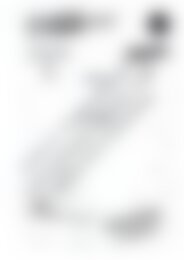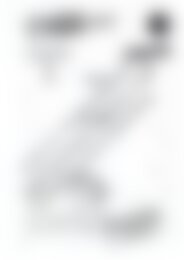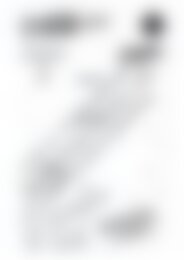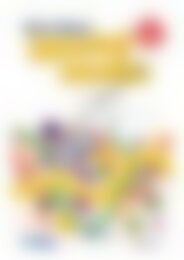RIC-3531 Primary Science - Book D (Digital)
Create successful ePaper yourself
Turn your PDF publications into a flip-book with our unique Google optimized e-Paper software.
It’s Just a Gas!<br />
Changing States – Activity 3<br />
Lesson Focus<br />
Outcomes<br />
Natural and Processed<br />
Materials<br />
2.12 Distinguishes between<br />
changes that can not<br />
be readily reversed and<br />
those that can.<br />
Indicators<br />
• Identifies changes in<br />
materials through the<br />
senses.<br />
• Describes and draws<br />
conclusions from the<br />
investigation.<br />
Skills Focus<br />
• Conducts simple tests<br />
• Observes<br />
• Records<br />
• Describes<br />
• Investigates<br />
Background Information<br />
When some materials are<br />
mixed together a gas is made.<br />
In this chemical reaction,<br />
vinegar and bicarbonate<br />
of soda react together and<br />
give off carbon dioxide. The<br />
balloon inflates as it fills with<br />
the gas.<br />
Before the Lesson<br />
Materials Needed<br />
Plastic zip-lock or snap-lock bag, two small plastic bottles (with narrow necks),<br />
large tray, a balloon, bicarbonate of soda, vinegar, a teaspoon, a funnel, tray.<br />
Preparation<br />
Organise sufficient materials for small groups.<br />
The Lesson<br />
Stimulus<br />
• Demonstrate how air takes up space by taking an empty snap-lock plastic bag from<br />
its container. Open the bag and swing it hard through the air. Without flattening<br />
it, zip it closed. How is the bag different from when it came out of the packet? (It<br />
has now expanded and filled with air.) The plastic bag now takes up space and will<br />
not fit back in its packet. Why? It is filled with air (gas) and is too big to fit into its<br />
original packet.<br />
What to Do<br />
• Sometimes when materials are mixed together a gas is made.<br />
• Explain that the following experiment will make a gas.<br />
• Choose one student in the group to practise fitting a balloon over the neck of one<br />
of the bottles. This will need to be done quickly during the experiment.<br />
• In the other bottle, place a teaspoon of bicarbonate soda using a funnel. (Put the<br />
tray under the bottle to catch any spills)<br />
• Carefully pour a small amount of vinegar into the bottle.<br />
• Put your thumb over the opening of the bottle. What do you feel? (heat) What<br />
do you see? (bubbling reaction) What do you hear? (fizzing) Record these<br />
experiences.<br />
• Repeat the process with the second bottle, but this time quickly place the balloon<br />
over the neck of the bottle. Shake the bottle gently side to side. What happens?<br />
Record your results.<br />
• Discuss why the balloon inflates.<br />
After the Lesson<br />
Answers<br />
1. Possible answers: oxygen, carbon dioxide, methane, steam (water vapour), carbon<br />
monoxide<br />
2. Teacher check<br />
Additional Activities<br />
• Cook cakes to show the changes that occur throughout the cooking process.<br />
Baking powder makes cakes rise. It gives off bubbles of carbon dioxide gas when<br />
it is heated. The bubbles are trapped in the mixture making it springy to touch<br />
and making the cake rise. Discuss what liquids are used in the mixture. Did they<br />
change? Why? (heat)<br />
Display Ideas<br />
• Take photographs of the students performing their ‘chemical reaction’. Display the<br />
pictures. Students add labels and notes to the display describing their findings.<br />
• Students make a collage using pictures from magazines of food and drinks that<br />
contain or used carbon dioxide to make them; for example, soft drinks, cakes and<br />
biscuits.<br />
©R.I.C. Publications<br />
Low Resolution Images<br />
Display Copy<br />
46 PRIMARY SCIENCE ~ R.I.C. Publications ® ~ www.ricpublications.com.au<br />
ISBN 978-1-925660-54-8











